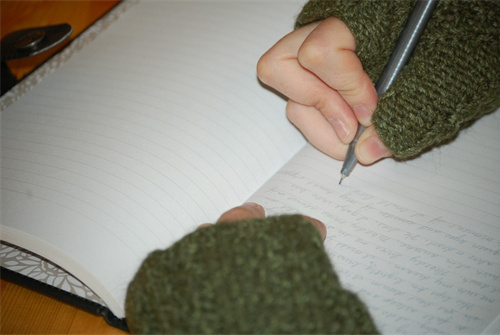七年級(jí)英語(yǔ)優(yōu)秀教學(xué)設(shè)計(jì)

七年級(jí)英語(yǔ)優(yōu)秀教學(xué)設(shè)計(jì)
作為一位兢兢業(yè)業(yè)的人民教師,常常要寫一份優(yōu)秀的教學(xué)設(shè)計(jì),教學(xué)設(shè)計(jì)是把教學(xué)原理轉(zhuǎn)化為教學(xué)材料和教學(xué)活動(dòng)的計(jì)劃。我們應(yīng)該怎么寫教學(xué)設(shè)計(jì)呢?以下是小編精心整理的七年級(jí)英語(yǔ)優(yōu)秀教學(xué)設(shè)計(jì),僅供參考,大家一起來(lái)看看吧。
篇一:初中英語(yǔ)七年級(jí)教案
Unit3. Why do yu like koalas?
The first period
Ⅰ.Teaching Aims and Demands
1.Knowledge Objects.
1)Key vocabulary
koala tiger elephent.dolphin panda lion penguin giraffe zoo
cute map smart
2)Target language
Let’s see the pandas.
Why do you like see the tigers?
Because they are cute.
2.Ability Objects:
1)Train students’abilities of listening and speakng.
2) Enable and help the students to learn how to listen to and talk about animals.
3.Moral Object:
It is very important for everyone to love the nature and protect animals .The earth is our home and animals are our friends..It is our duty to love the nature and protect enviroment.
Ⅱ Teaching Key and Difficult Points
1)Describe the animals using the words and the target language.
2)Get students to learn “Why questions”, “Because answers” and the adjectives of quality.
Ⅲ.Teaching methods
1)Watching and describing methods
2) Oral practicing method.
Ⅳ.Teaching Aids:
1)objects and some pictures.
2)A recorder and computer
Ⅴ.Teaching procedures
Step1.Warming up
1) Play the tape,get the students to listen to music of animals
2) Play a guessing game.
T: Listening to the voices of animals.
What kinds of animals are they?
3) Show some pictures about animals after guessing and talk about animals.
T: Look,there is a big zoo in our city There are many animals in
it.Do you want to see the animals in the zoo?Let’s go into the
zoo.What kind of animals can you see?
Step2.Present the new words
1) T: Look. What is this in Chinese?
Ss:“考拉”
T: What is this in English?Do you know?
Ss: No
T: It is a koala. Read after me K-O-A-L A, koala.
2)Show some new words in the pictures.and teach students to learn them.:
koala tiger elephent.dolphin panda lion penguin giraffe
zoo cute map smart
Step3. Practice the new words(1a)
1)Get students to read the words in 1a
2)Match the words with the animals in the oictures.
3)After that check the answers.
Step4. Task
1) Look at the pictures of animals and describe the animals like this. T: Let’s see the pandas .Do you like them?
S1: Yes.I like them very much.
T: Why do you like them?
S1: Because they are cute .Let’s see the lions.
T: Why do you want to see the lions.?
S1: Because they are smart.
T: Do they live on the land or in the water?
S1: They live on the land.
(At the same time,Teach the students the words,smart,cute)
2)Get students to come up wth more new adjectives of quality to describe the animals.
cute, smart, fun, interesting, scary, shy, lazy.
(At this time,we can also let the students have a competition.This method can make the students active in class and it can help them develop their quick response and wide thinking)
3)Get students to ask and answer in pairs to descibe the animals.
4)Get students to performin in front of the class.
Step5. Listening
1)Play the tape,get students to listen and check.the animals in 1
2)Play the tape again.Ask students to work in pairs.Students listen and repeat after the recording
3)Check the answer.
Step6. Pairwork
1)Ask the students to make conversations in pairs. Show the followng.
A:Let’s see the elephant.
B:Why do you want to see the elephant?
A:Because they are very smart.
(T:Now please make conversations in pairs ,using the animals in Activity 1c.You can have a competition and let’s see which pair of students is the best?)
2)Get a few pairs to show their conversations.
Step7 Summary
Today we have learnt lots of new words of animals,and the target language.We can describe the animals and other things using the target language.Now,We should remember the earth is our home and animals are our friends. It is our duty to protect animals and love the nature. Step8 Homework.
1)Make a survey:What animals do you like?why?
2)Write them down and make a conversation
VI Blackboard design
篇二:2024年新人教版七年級(jí)英語(yǔ)下冊(cè)教案
Unit 1 Can you play the guitar?
Section A (1a-2d)
一、教學(xué)目標(biāo):
1. 語(yǔ)言知識(shí)目標(biāo):
1) 能掌握以下單詞:
guitar, sing, swim, dance, chess, play chess, draw, speak, speak English, join, club
能掌握以下句型:
① —Can you play the guitar? —Yes, I can./ No, I cant.
② —What can you do? —I can dance.
③ —What club do you want to join? —I want to join the chess club.
2) 能了解以下語(yǔ)法:情態(tài)動(dòng)詞can的用法
want to do sth.的用法
2. 情感態(tài)度價(jià)值觀目標(biāo):
該部分內(nèi)容貼近學(xué)生的生活,談?wù)摰脑掝}是能力。通過(guò)互相詢問(wèn)或談?wù)撟约夯驅(qū)Ψ皆谀骋环矫娴哪芰Γ梢耘囵B(yǎng)學(xué)生的一種群體意識(shí)。
二、教學(xué)重難點(diǎn)
1. 教學(xué)重點(diǎn):
1) 學(xué)習(xí)詢問(wèn)和談?wù)摫舜说哪芰吞亻L(zhǎng);
2) 掌握一些彈奏樂(lè)器的表達(dá)方式。
2. 教學(xué)難點(diǎn):
情態(tài)動(dòng)詞can的構(gòu)成和使用。
三、教學(xué)過(guò)程
Ⅰ. Lead in
1. 教師可攜帶一些易于演奏的樂(lè)器,也可帶一些演奏樂(lè)器的圖片,一邊演示樂(lè)器,一
邊說(shuō): I can play the guitar.…等;再指著圖片說(shuō):He/She can play the violin.But I can’t play it.等;然后詢問(wèn)學(xué)生:Can you play the guitar?….并引導(dǎo)學(xué)生進(jìn)行簡(jiǎn)單的回答。
2. Ss look at the picture in 1a. Then read the words and phrases. Let Ss match the activities
with the people.
Then Check the answers with the class together.
Ⅱ. Presentation
出示一些反映各種活動(dòng)的圖片、幻燈片或播放課件,引導(dǎo)學(xué)生談?wù)摶顒?dòng):
He/She can dance/swim/sing/"··But I can’t dance/swim/sing/...等,學(xué)習(xí)表達(dá)活動(dòng)的動(dòng)詞短語(yǔ)。
Ⅲ. Game (What can I do?)
T: Tell your partners what you can do. For example:
I can play the guitar. I can sing and dance.
Ss work in groups. The let some Ss talk to their classmates in front of the class. Ⅳ. Listening
1. T: Now let’s listen to the tape, find out the right conversation, and number them 1-3. (播放lb部分的錄音讓學(xué)生聽(tīng),引導(dǎo)學(xué)生根據(jù)所聽(tīng)到的內(nèi)容,選出對(duì)話的順序,
完成1b部分的教學(xué)任務(wù)。)
2. Check the answers:(3, 2, 1 )
Ⅴ. Pair work
1. Ask the Ss to practice the conversations in 1b with a partner. Then make their own conversations.
(引導(dǎo)學(xué)生展開(kāi)Pairwork活動(dòng),完成lc部分口語(yǔ)交際的教學(xué)任務(wù),學(xué)會(huì)運(yùn)用can詢問(wèn)和表達(dá)能力。)
Ⅵ. Listening
1. Work on 2a;
T: Now, look at the pictures on P2, listen to the four conversations. Just listen.
(Play the recording for the first time, students only listen carefully.)
Then, listen to the recording again, and circle the clubs you hear.
Check the answers with the class.
2.
Work on 2b;
引導(dǎo)學(xué)生根據(jù)對(duì)話內(nèi)容用正確的單詞填空,補(bǔ)全對(duì)話,再播放聽(tīng)力材料一遍。讓學(xué)生進(jìn)行校對(duì),練習(xí)聽(tīng)力和寫作能力,完成2b部分的教學(xué)任務(wù)。
Check the answers with the Ss.
Ⅶ. Pair work
1. Look at 2b and talk about what the people can do and the clubs they want to join.
老師可以和一名優(yōu)秀的學(xué)生做一個(gè)對(duì)話的例子,讓學(xué)生們明白如何去問(wèn)答,例如: T: What club does Lisa want to join?
S1: She wants to join the chess club.
T: Can she play chess?
S1: No, she cant.
2. Ss work in pairs to practice asking and answer about Lisa, Bob and Mary.
3. Ask some pairs to act out their conversations.
Ⅷ. Role-play
1. Ask Ss to look at the picture in 2d. Then Ss read the dialogue by themselves and try to
find out the answers to these questions.
① What club does Bob join?
② What club does Jane join?
Ss read the conversation by themselves and find the answers to the questions. Then check the answers:
① Bob joins the soccer club.② Jane joins the English and art club.
2. Explain something that Ss cant understand.
3. Let Ss read after the teacher or play the recording and let Ss read after the recording.
4. Ss work in pairs to act out the conversation.
5. Ask some pairs come to the front of the classroom. They try to act out the conversation. See which group is the best.
Homework:
1. Remember the new words and expressions after class.
2. Recite the conversation after class.
3. Write English names as many as possible in the exercises book.
Section A (Grammar Focus-3c)
一、教學(xué)目標(biāo):
1. 語(yǔ)言知識(shí)目標(biāo):
1) 繼續(xù)練習(xí)運(yùn)用情態(tài)動(dòng)詞can。學(xué)會(huì)詢問(wèn)和談?wù)摫舜说哪芰吞亻L(zhǎng)。 能掌握以下句型:
① —Can you play the guitar? —Yes, I can./ No, I cant.
② —What can you do?—I can dance.
③ —What club do you want to join? —I want to join the chess club.
2. 情感態(tài)度價(jià)值觀目標(biāo):
該部分學(xué)習(xí)詢問(wèn)或談?wù)撟约夯驅(qū)Ψ皆谀骋环矫娴哪芰吞亻L(zhǎng),可以培養(yǎng)學(xué)生的一種群體意識(shí),促進(jìn)同學(xué)們對(duì)自身的認(rèn)識(shí),為將來(lái)的自我發(fā)展奠定基礎(chǔ)。
二、教學(xué)重難點(diǎn)
1. 教學(xué)重點(diǎn):
1) 讓學(xué)生重點(diǎn)總結(jié)、發(fā)現(xiàn)情態(tài)動(dòng)詞can的用法。
2) 通過(guò)一些與學(xué)生們實(shí)際生活相貼近的教學(xué)活動(dòng),來(lái)達(dá)到熟練運(yùn)用的目的。
2. 教學(xué)難點(diǎn):
1) 情態(tài)動(dòng)詞can的用法;
2) 在實(shí)際交際活動(dòng)中運(yùn)用can來(lái)詢問(wèn)與表達(dá)自己或他人的能力。
三、教學(xué)過(guò)程
Ⅰ. Warming- up and revision
1. Ask some Ss about their abilities.
T: Hi, S1! What can you do?
S1: I can sing and dance?
T: Can you play the guitar?
S1: Sorry, I cant. But I can play chess.
T: What club do you want to join?
S1: I want to join the chess club.
2. Role-play.
Let some pairs role play the conversation in 2c.
Ⅱ. Grammar Focus.
1. 閱讀指導(dǎo):
2. 學(xué)生閱讀Grammar Focus中的句子,然后做填空練習(xí)。
① 你會(huì)游泳嗎?
______ you ______?
② 是的,我會(huì)。/ 不,我不會(huì)。
Yes, ____ _______. / No, I _______.
… (其余試題見(jiàn)課件部分)
3. 學(xué)生們完成填空試題后,可以打開(kāi)課本檢查答案,對(duì)錯(cuò)誤的句子,單獨(dú)進(jìn)行強(qiáng)化記憶。 Ⅲ. Try to Find
老師將情態(tài)動(dòng)詞的`can的用法,以學(xué)案的方式呈現(xiàn)在大屏幕上,讓學(xué)生自主學(xué)習(xí),并發(fā)現(xiàn)其用法。
1. 可以看出,在Can…?句型中,情態(tài)動(dòng)詞can沒(méi)有________和_______ 的變化。
2. 用情態(tài)動(dòng)詞can來(lái)詢問(wèn)他人的能力可以歸納為以下句型:
Can + _______+ _________ + 其他?
肯定回答:_________________
否定回答: _________________
What + can + _______ + ________ ?
學(xué)生們合作學(xué)習(xí)討論上面學(xué)案的答案,總結(jié)情態(tài)動(dòng)詞can的用法。
老師找部分學(xué)生對(duì)上述問(wèn)題作答,并一起討論總結(jié)情態(tài)動(dòng)詞can的用法。
Ⅳ. Practice
1. Look at 3a. 告訴學(xué)生們用所給的詞匯來(lái)造句子。首先,用情態(tài)動(dòng)詞can及所給的第一個(gè)動(dòng)詞詞組來(lái)造一個(gè)一般疑問(wèn)句,并作出一個(gè)否定的回答。然后,用轉(zhuǎn)折連詞but及第二個(gè)詞組造一個(gè)肯定句。
Teacher makes the first one as a model:
Can Wu Jun speak English? No, he cant, but he can speak Chinese.
Ss try to make sentences using the phrases in 2~5. They can discuss with their partners. Then let some Ss tell their answers to the class.
Check the answers with the class.
2. Look at 3b. Tell Ss that your school is going to have a School Show next week. What can you do? You can show your talent in it. In order to let all the students know about it. We have to write a poster. Now, read the poster below and try to complete the poster with the
words in the box.
方法指導(dǎo):應(yīng)通讀全文,掌握短文大意;然后,仔細(xì)閱讀每個(gè)句子,根據(jù)空格前后的詞語(yǔ)進(jìn)行推敲。比如,第三空格后有g(shù)uitar一詞,可知些空格應(yīng)填play一詞。其他類似。
學(xué)生們,按老師指導(dǎo)的方法進(jìn)行閱讀,并逐句推敲每空應(yīng)填什么詞,在實(shí)際的運(yùn)用提高自己的閱讀能力、分析能力及綜合運(yùn)用能力。
最后,教師與同學(xué)們一起校對(duì)答案,并對(duì)學(xué)生們有疑問(wèn)的地方進(jìn)行解釋。
Ⅴ. Group work
1. What can your group do in the school show? Make a list, then report to your classmates.
2. First, work in group ask and answer about what you can do? e.g.
S1: What can you do, S2?
S2: I can do kong fu.
S1: Great! What about you S3?
S3: I can sing very well.
…
3. Then make a list together.
4. Everyone in your group must write a report. Then select one student to report what your group can do. e.g.
In my group, Li Ming can do kong fu. Zhang Li can sing very well. Ma Shuang can dance well…
(最后,可以經(jīng)學(xué)生們?cè)u(píng)議來(lái)推舉最有能力的小組)
Ⅵ. Exercises
1. If time is enough, do some more exercises on big screen.Homework
1. Read the sentences in Grammar Focus.
2. Write a report about what your family members can do.








